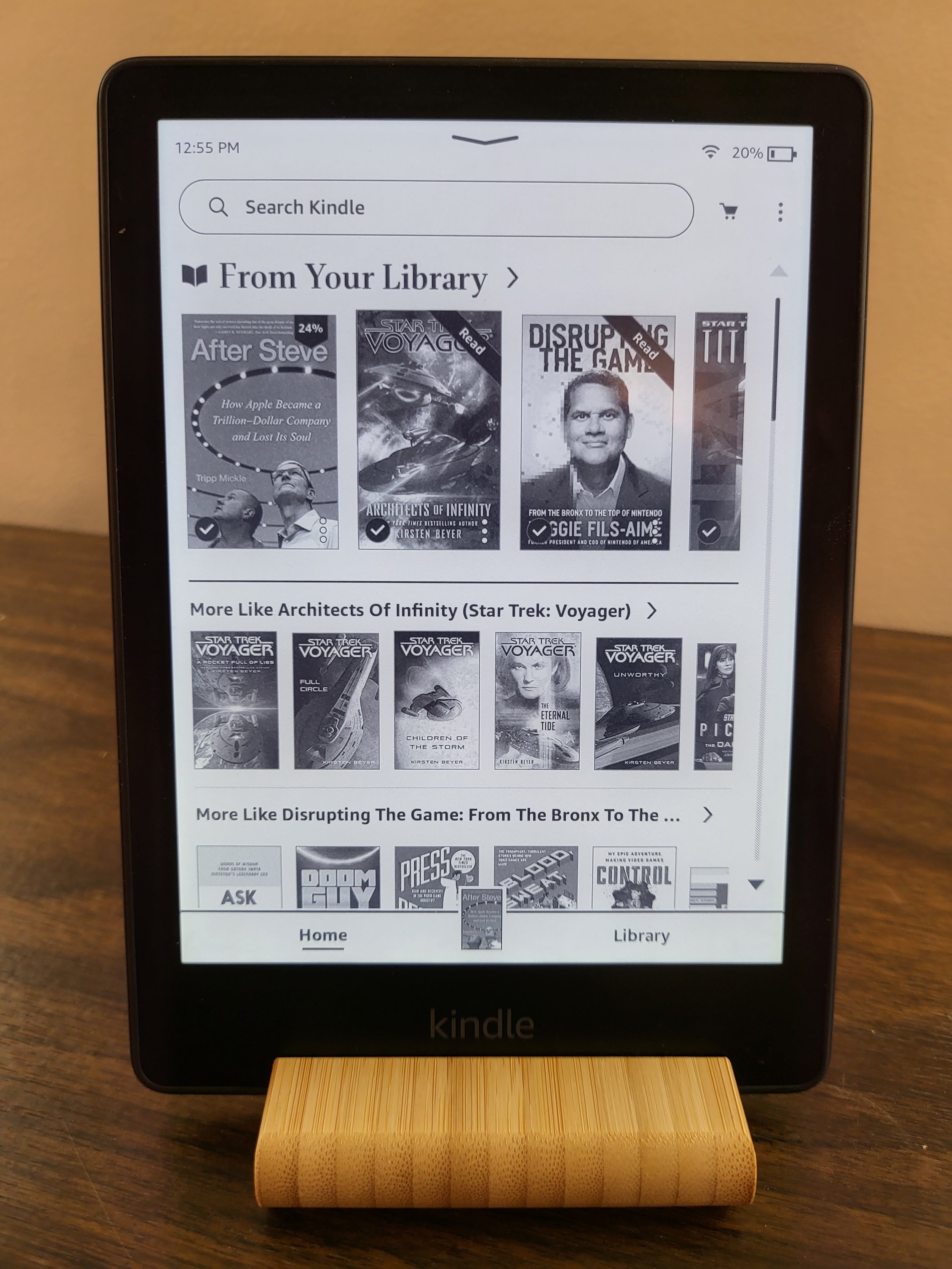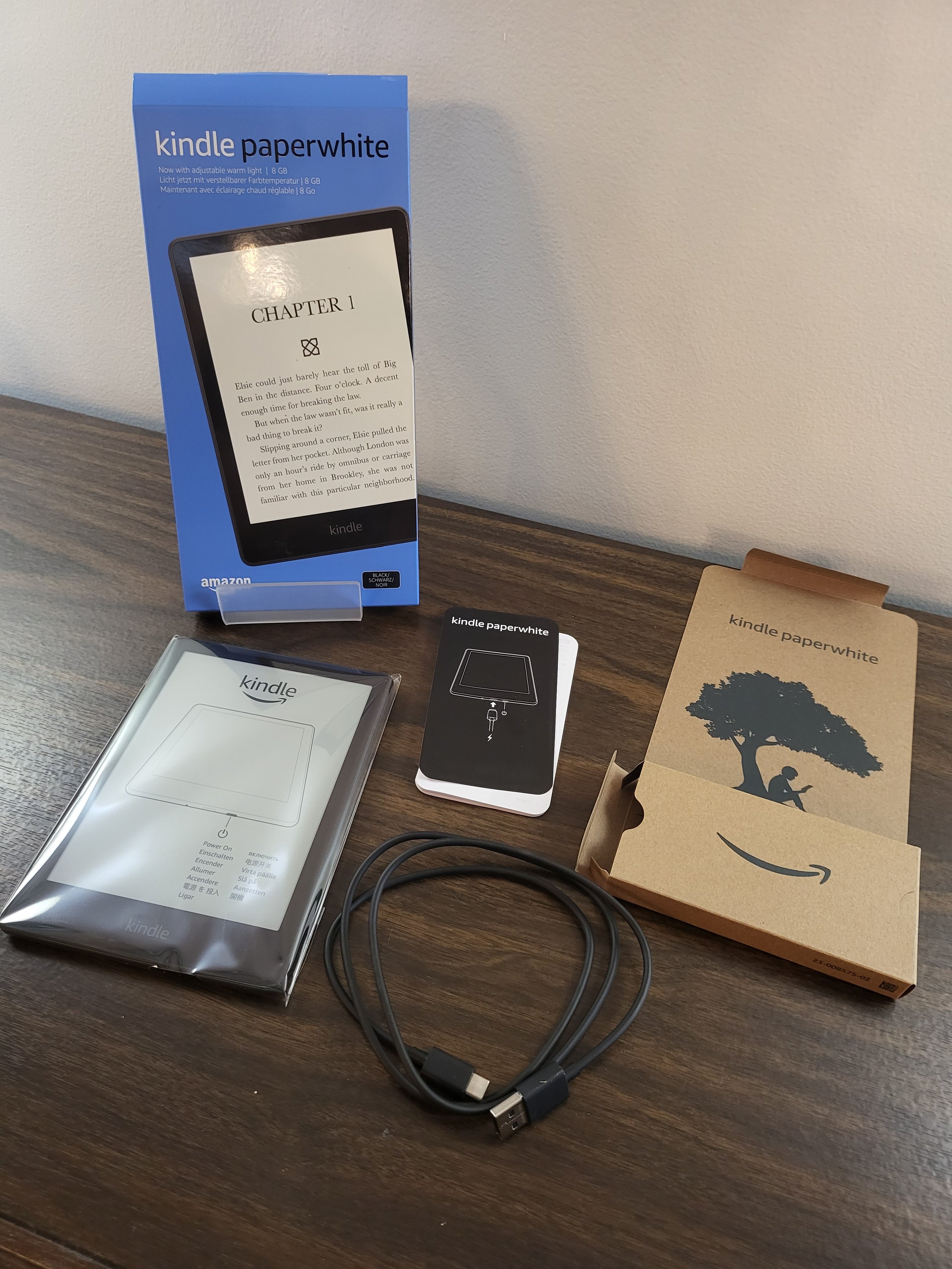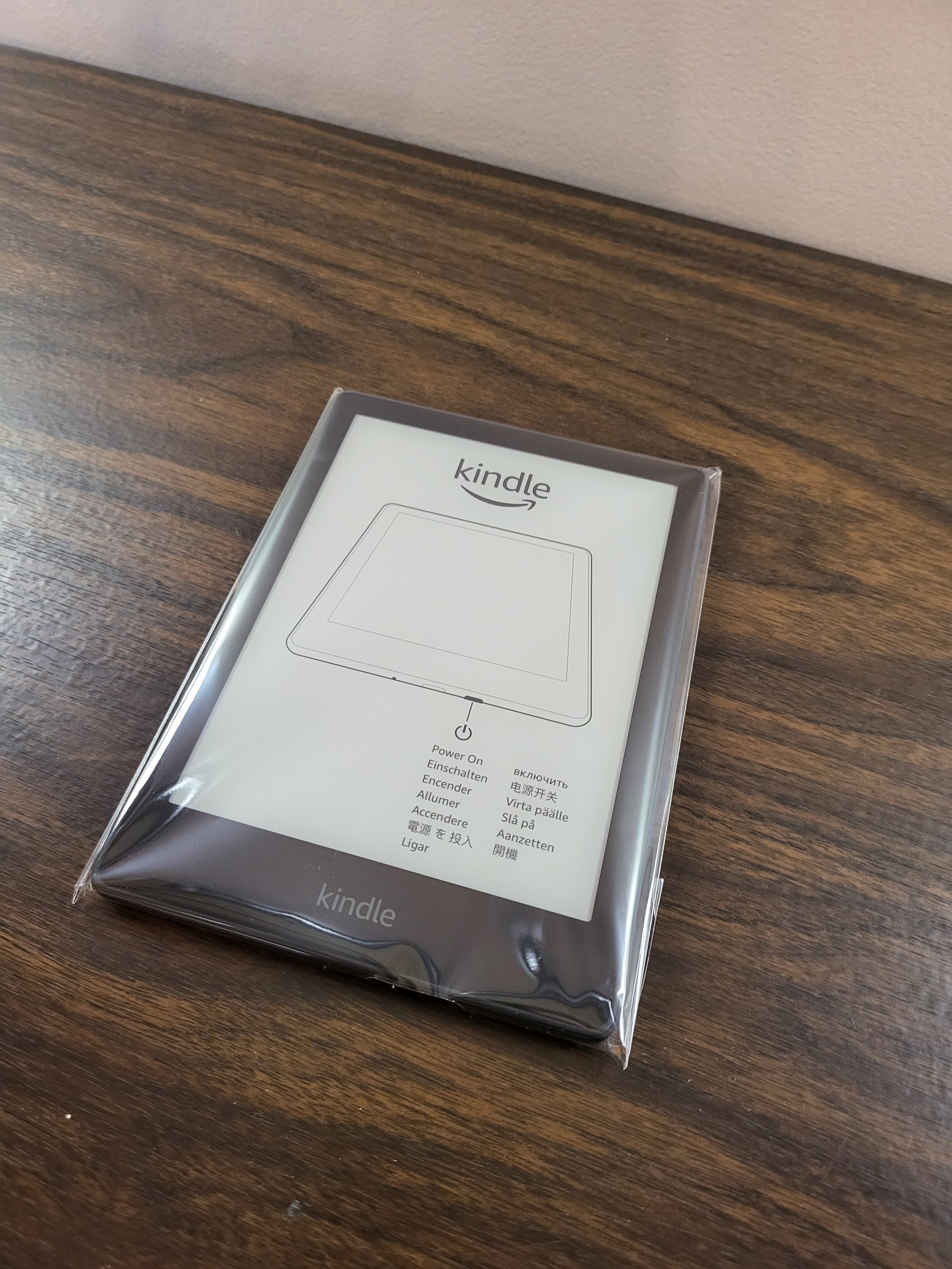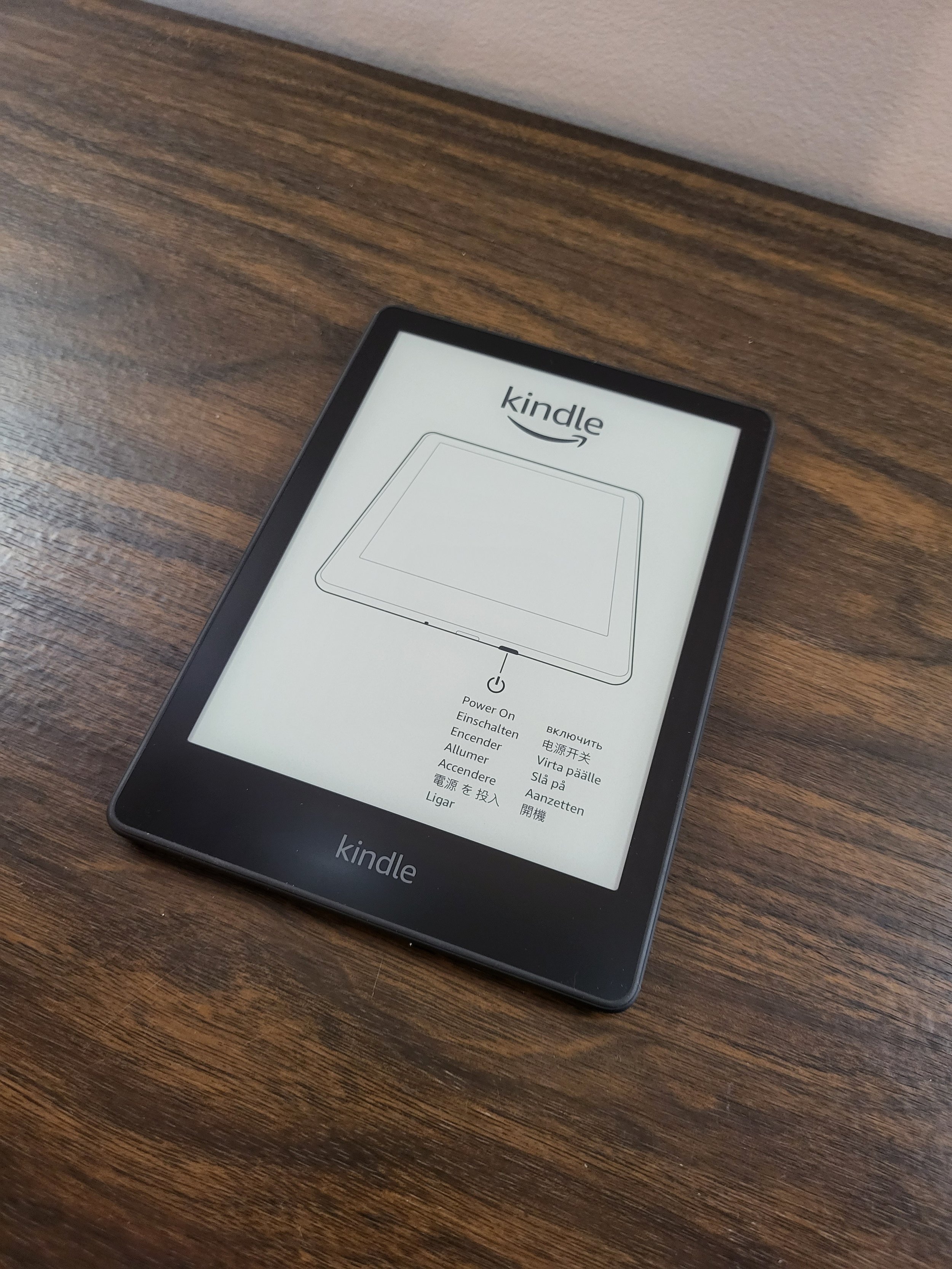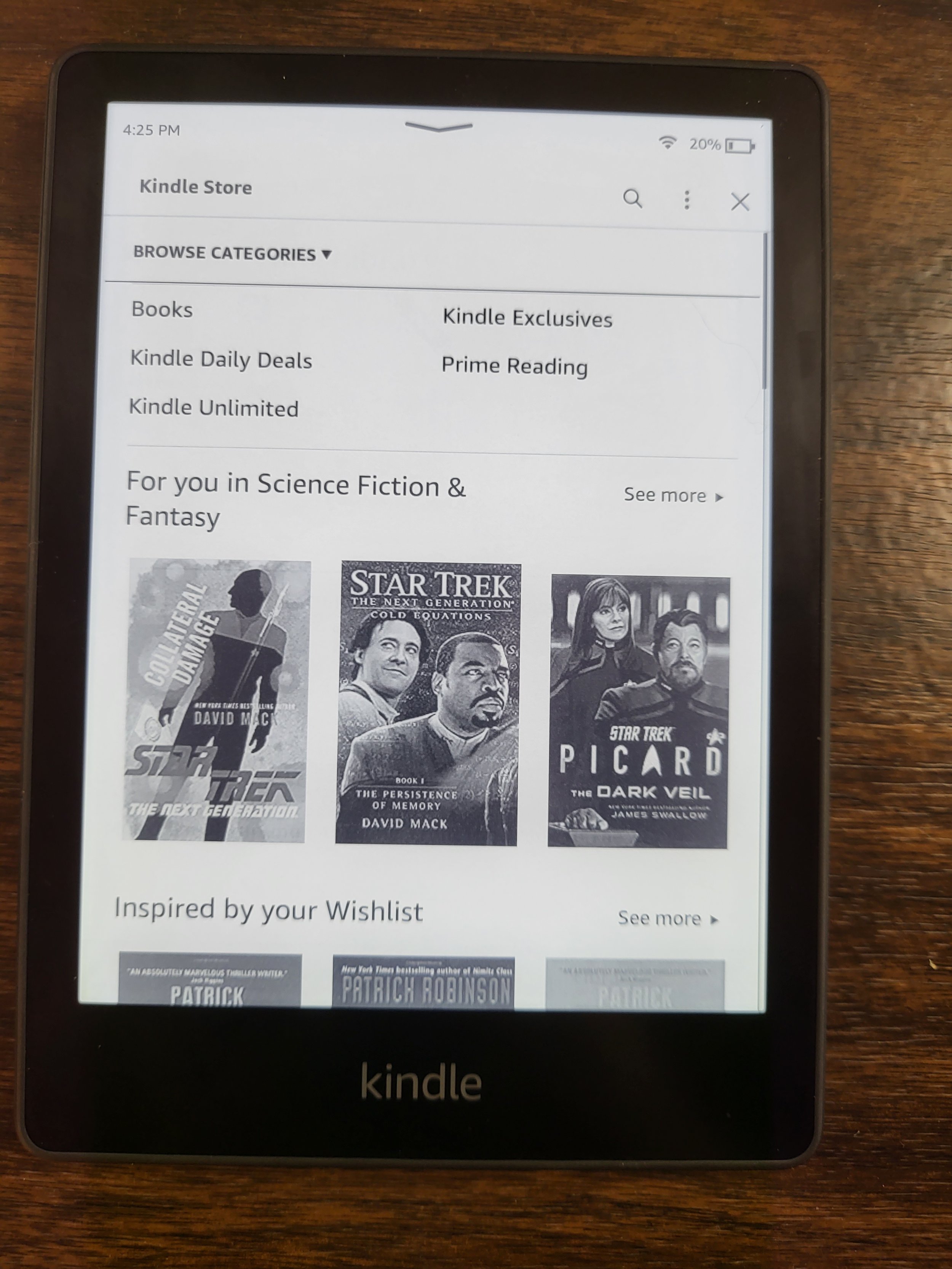Not every piece of technology is exciting. Heck, in 2022 most aren’t. And one of the most boring pieces of technology are e-readers. Built on their black and white e-ink screens, e-readers are for reading books, and nothing more. The last time I bought an e-reader was in 2012, making my original Kindle Paperwhite 10 years old. I finally replaced it with the 2021 model of the Kindle Paperwhite, not because the old one stopped working, but mostly because the battery doesn’t really hold a charge anymore. Charge it from dead to full, and the battery will be dead again in a couple days, not ideal for a device meant to be picked up and read on a whim.
So, what’s the point of a dedicated e-reader in 2022 when we can read books on phones and tablets with bigger, higher resolution, and colour screens? Why did I buy a new Kindle? Is it worth getting? Let’s dig in.
Hardware and Unboxing: It’s a Kindle
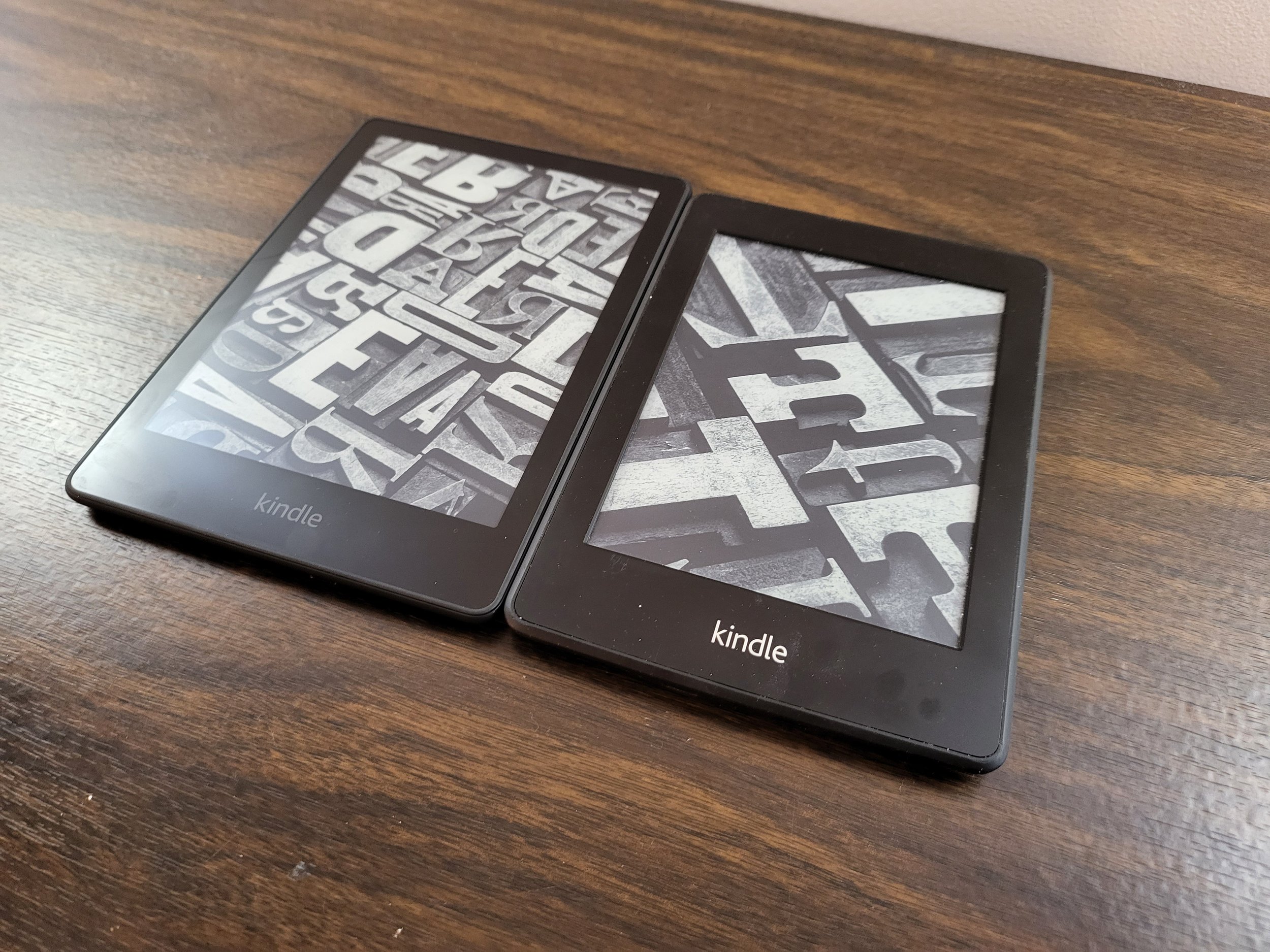
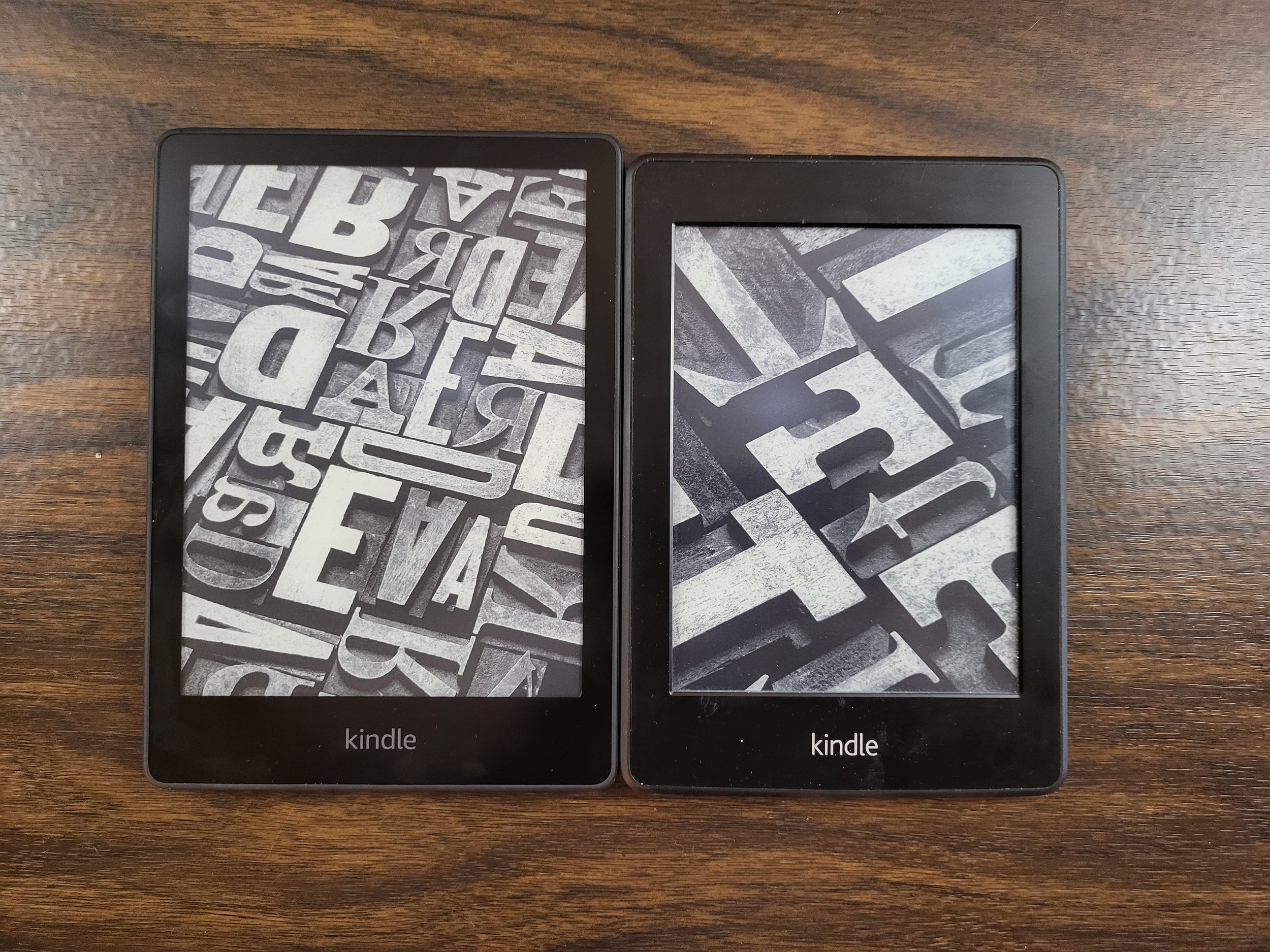
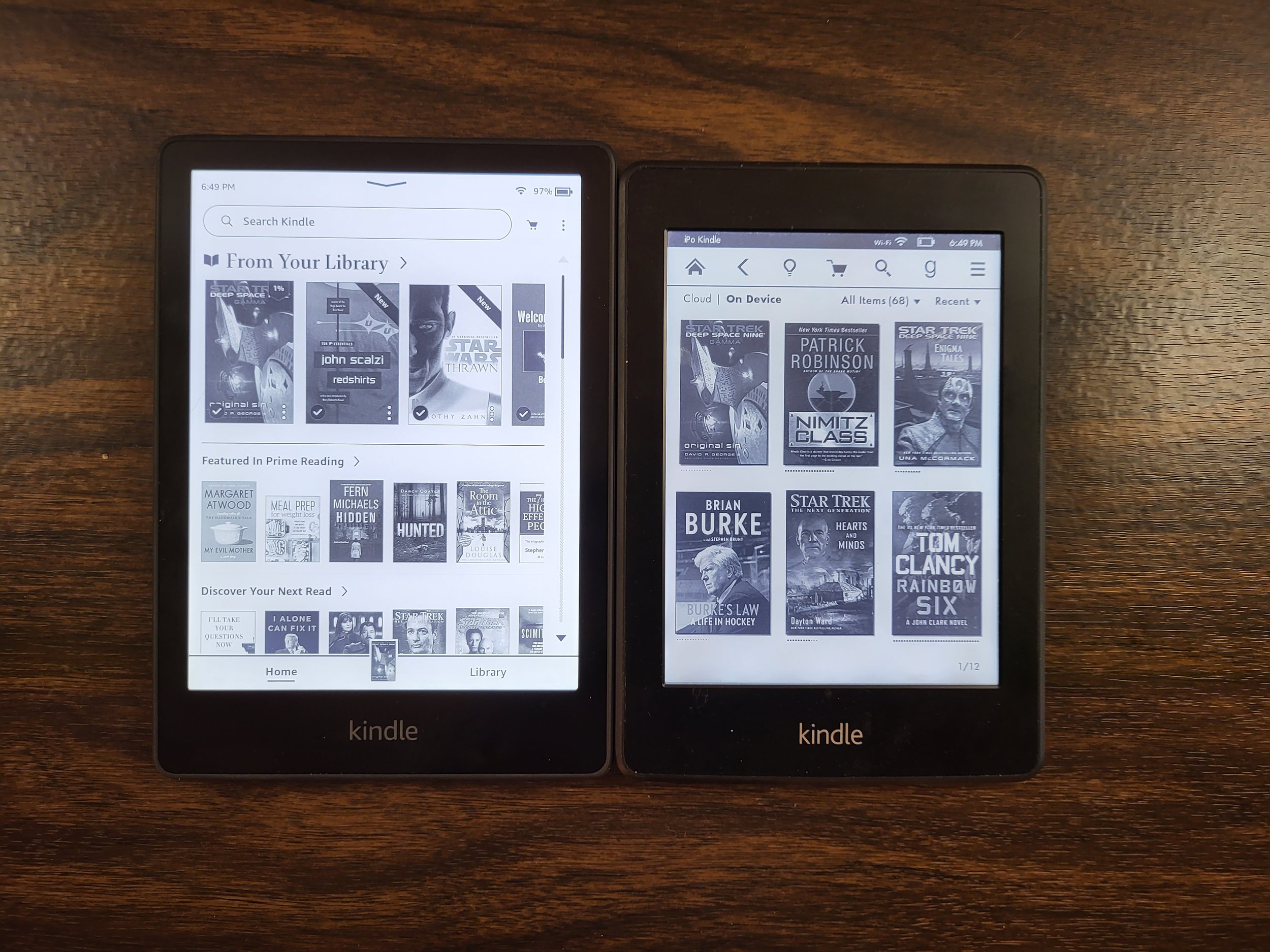
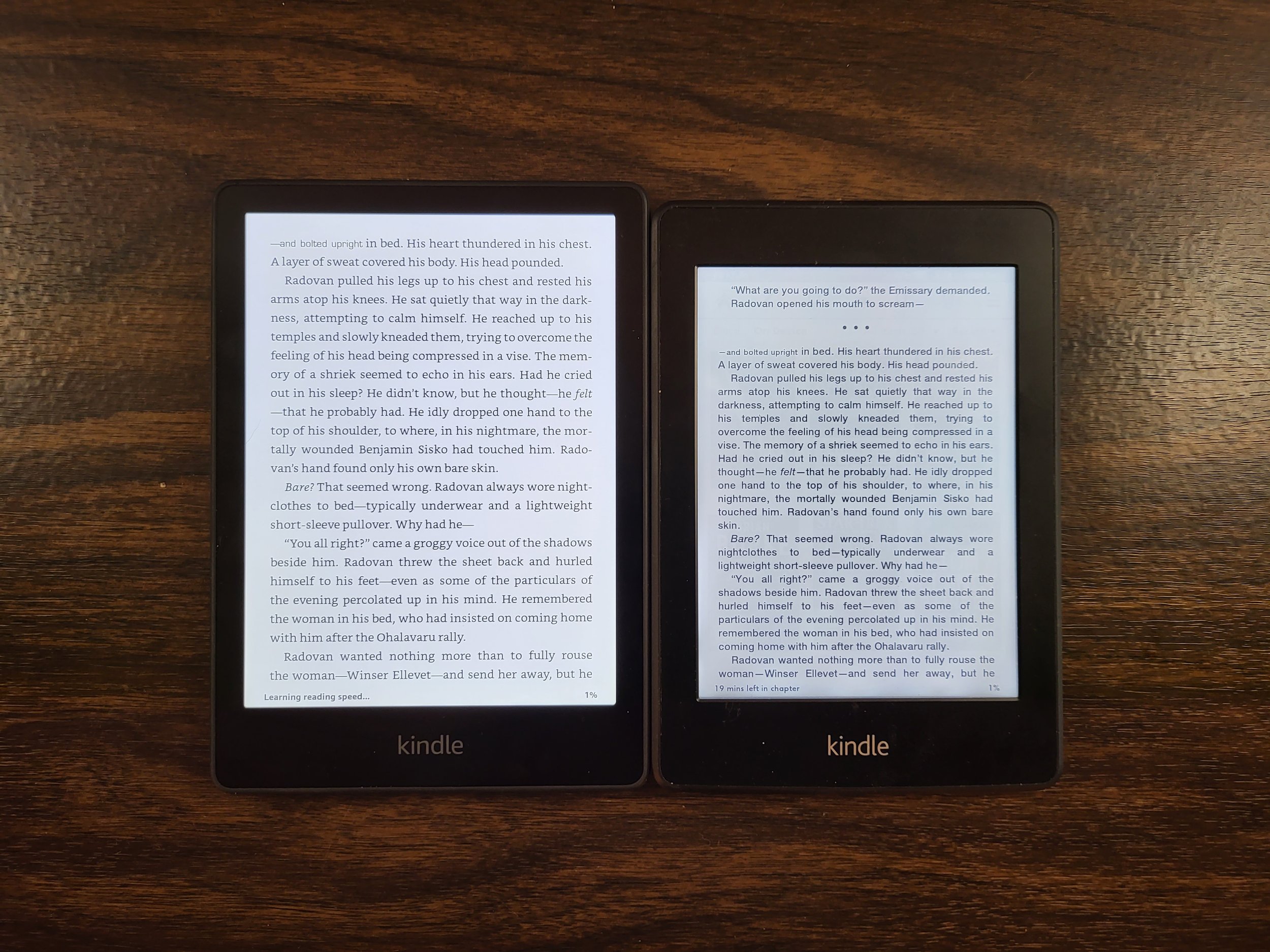
The 2021 release of the Kindle Paperwhite is about as iterative an update as you can get. The 5th version of the Paperwhite which is annoyingly marketed as the 11th generation of Kindle doesn’t change much from its predecessor, nor does it need to. The screen size is now 6.8” up from 6”. That screen maintains the 300 pixels per inch density for clear, sharp text. There are 17 LED’s for the backlight up from 5 in the previous Kindle Paperwhite and those LED’s now feature colour temperature adjustment, a nice feature previously found in the more expensive Kindle Oasis. The device is water resistant so beach and pool goers can be worry free. And the Paperwhite 5 now includes a USB-C port instead of the increasingly ancient MicroUSB port. While there is no fast charging here at least the cable is now the same one most people have for the phones, tablets, and even most laptops. Not that you’ll have to charge it much. Battery life is marketed as up to 10 weeks, and in casual use I’ve only had to chare it once in a couple of months. Avid readers will likely still see more than a month of battery life on this Kindle.
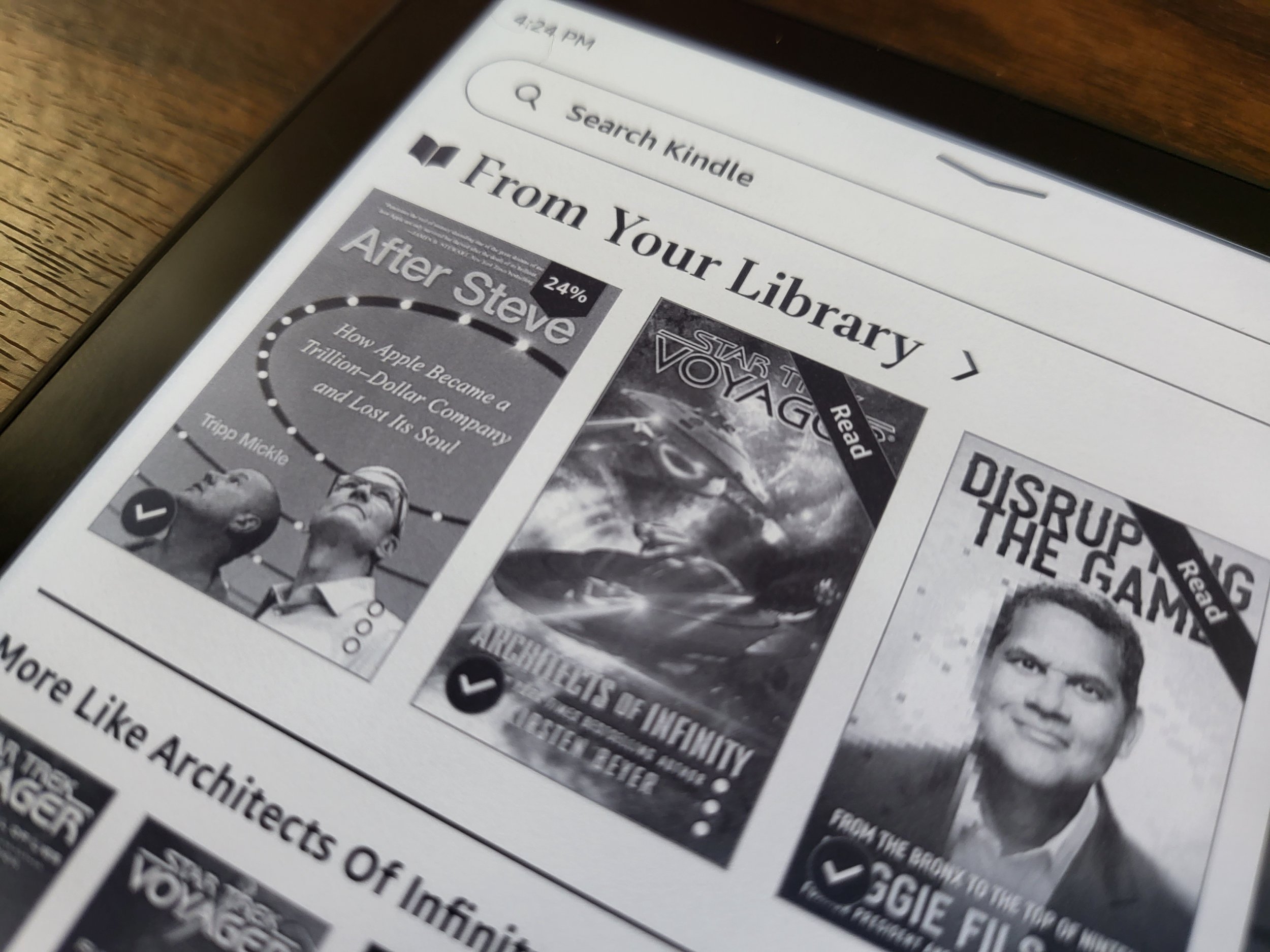
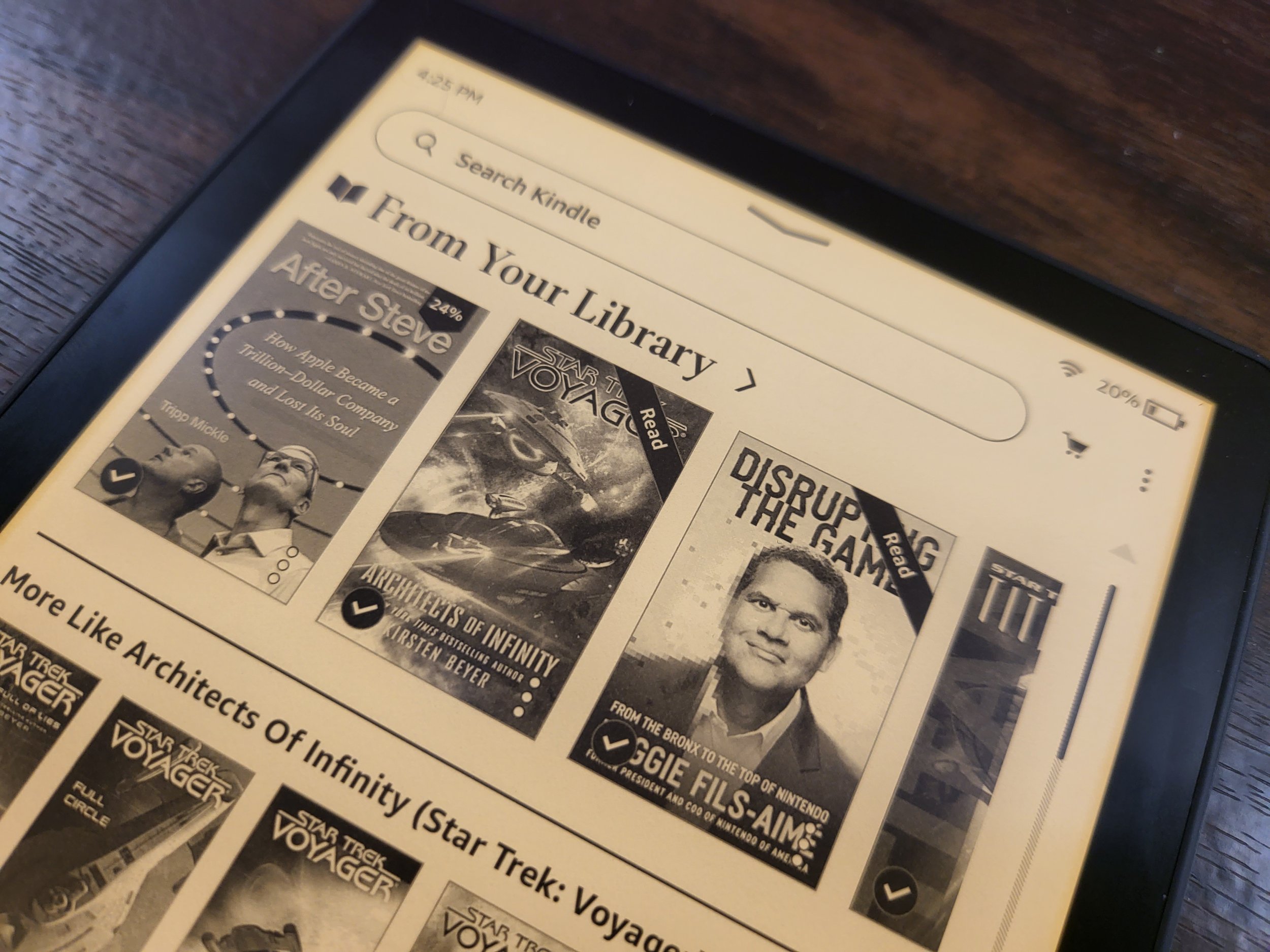
There are two versions of the Paperwhite 5, the standard model is $150 and comes with 8GB of storage. The Signature Edition for $210 that has 32GB of storage, an ambient light sensor to automatically change the colour temperature of the backlight, and qi wireless charging. I don’t think any of the features of the Signature Edition were worth the premium, so I went with the standard model.
One thing that has been dropped from the Kindle Paperwhite is the model with cellular connectivity. The cellular model has been on at least one model of the Kindle Paperwhite for the first 4 versions, and allowed users to buy and download books, and sync reading progress over a cellular connection without needing wifi, all provided for free. I used this extensively on my original Kindle Paperwhite, with it being extremely valuable for those who travel. Nowadays, with more plentiful wifi connectivity it is less of an issue, but it is missed. For those who must have the cellular connectivity, only the more expensive Kindle Oasis now offers that, with the top end model featuring the cellular connectivity at a price of $400. I can’t justify that cost for what is a single purpose device, even if I do plan to use it for years to come. I would have gladly paid for the Signature edition of the Paperwhite had it come with the optional cellular connection, but was not given the option.
Reading Experience: It’s a Kindle
Actually using the Kindle to read books is… well, it’s a Kindle. Coming from the first Kindle Paperwhite it actually does feel much faster. The text is noticeably sharper, and the backlight is significantly better. For someone with a 10 year old Kindle it is a worth upgrade. If you have a newer Kindle, it isn’t worth the upgrade, but if you have a 10 year old Kindle like I did it is probably time to consider a new one. It can hold every book I’ll ever want to read, and I can buy books directly from the Kindle while on Wi-Fi. And the battery life is excellent. Amazon says it can get up to “10 weeks” of battery life using the new power saving mode that is on by default. And that seems to be true. In over 2 months owning the Paperwhite 5 I’ve only had to charge it once.
A short description perhaps doesn’t do justice to the experience with the Kindle. I’ve always preferred to read books on an e-ink display compared to an LCD or OLED display on a phone or tablet. It feels more like an actual paper reading surface, and is less hard on the eyes. The softer backlight on a kindle is much easier to look at than a tablet screen, and reading at night is a much more pleasant experience to me. e-readers are, to me, the definitive way to read e-books. The Kindle provides a very good reading experience without distraction.
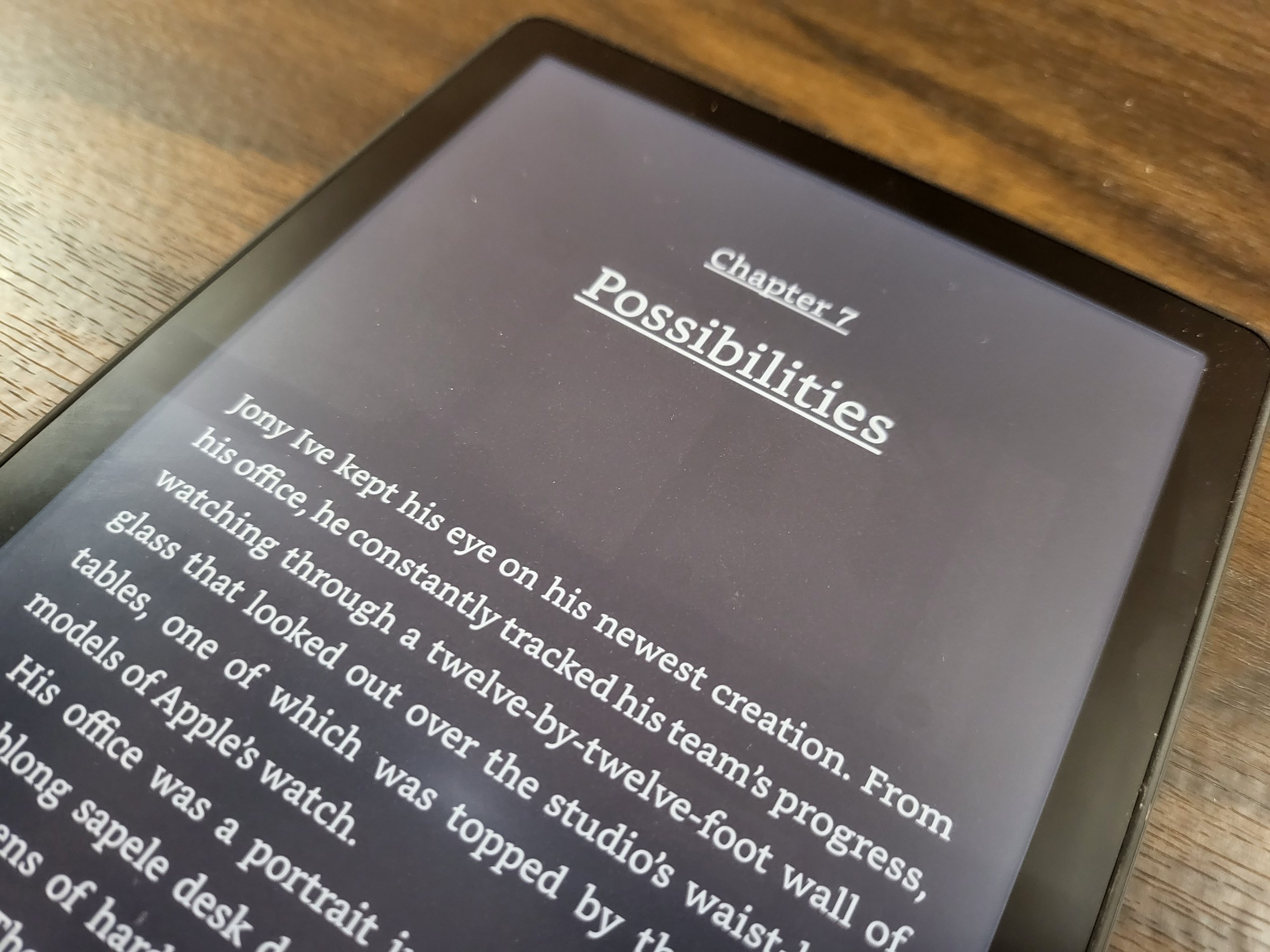

Single Purpose: It’s a Kindle
And distraction is exactly why I decided to buy a new Kindle. Reading on a phone or tablet screen is a more than good enough experience, some people do prefer reading on an iPad for the sheer size of the display. But the single purpose nature of the Kindle is what drew me back to it. I found I wasn’t reading nearly as much as I did years ago because there are 100 other things to do on my phone or tablet. It was too easy to read for 5 minutes, then go check notifications and/or get lost doom scrolling Twitter. I have found that I have read significantly more, and more consistently, since I got a device that allowed me to put down my phone and let me read on a device that doesn’t do anything else, just reading.
The Kindle e-readers aren’t perfect. The black and white screen means it isn’t good for content with colour, things like comic books or magazines, or other periodicals. The slightly larger size of the Paperwhite 5 with the 6.8” screen makes it just a little harder for me to hold on to laying on my back in bed, the slight added weight doesn’t help there either. The fact that it only (easily) supports content purchased from the Amazon Kindle store, and getting other content onto the device is hard, if not impossible for the average user locks you into a walled garden. In Canada, the lack of library book support also stings, especially since that functionality exists in the US. If you want to read eBooks from the library on an e-reader, the Kindle is a non starter in Canada, and that is very frustrating. That fact almost had me purchasing a Kobo e-reader, since that does support borrowing library books, but a 10 year history of buying books on Kindle and those books not being readable on Kobo e-readers ultimately kept me to a Kindle.
Conclusion: It's a Kindle
And that really is the core of it. If you’re already in the Kindle ecosystem, it is hard to look at another device. A Kind of some kind is the default, and only choice unless you want to throw away your purchase history. Someone looking for their first e-reader would do well to shop around and pick the device that suits them best. But for someone with an old Kindle looking to upgrade, the Paperwhite is likely the best option. The walled garden is distraction free in the Amazon Kindle world.

